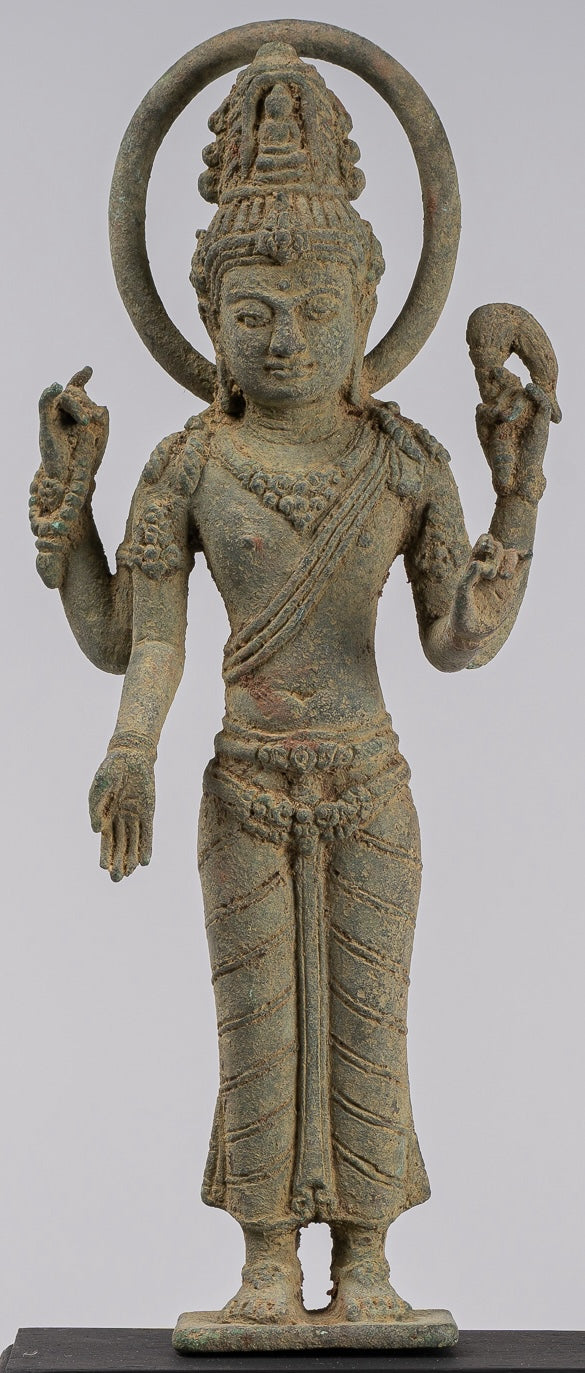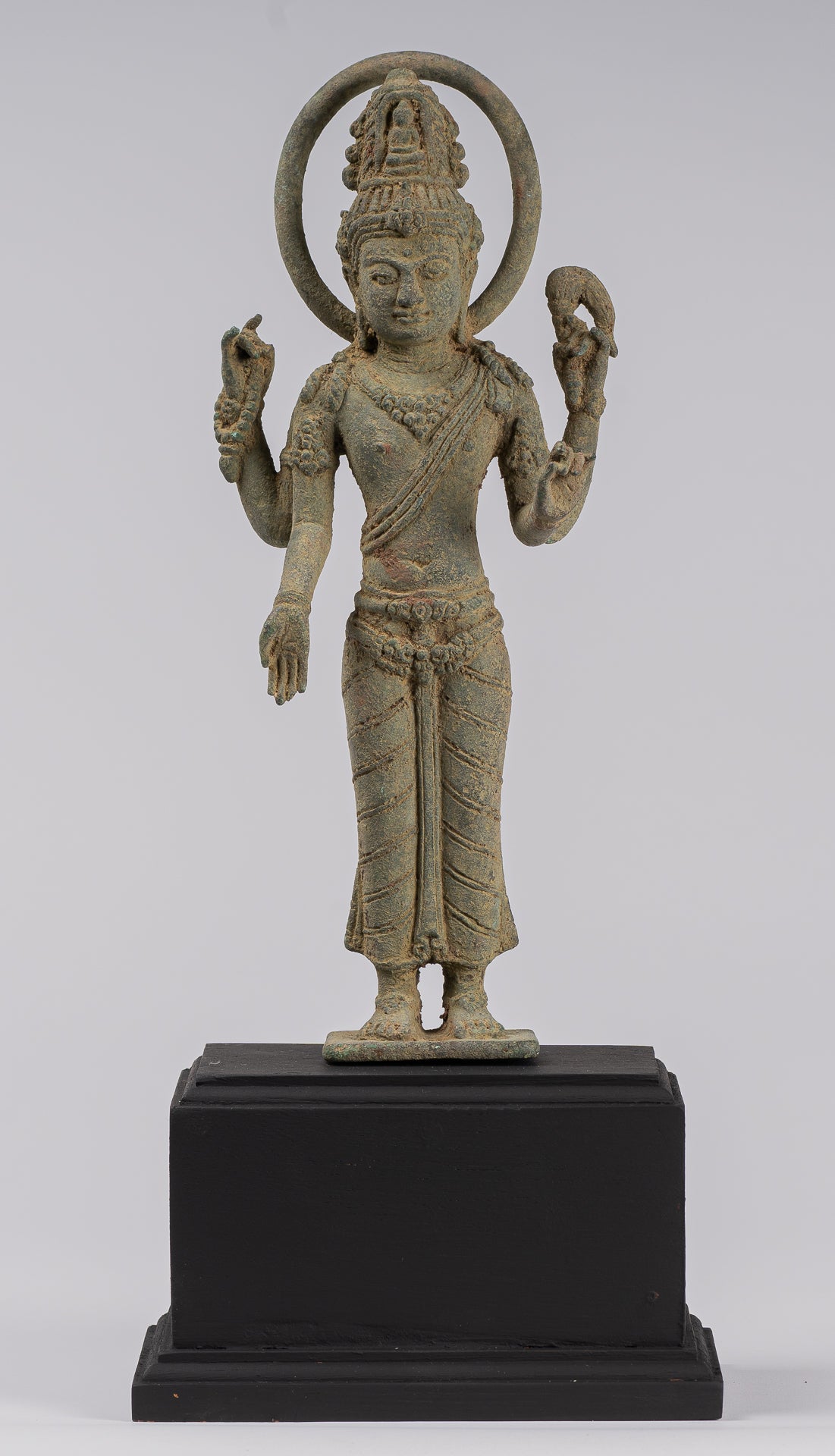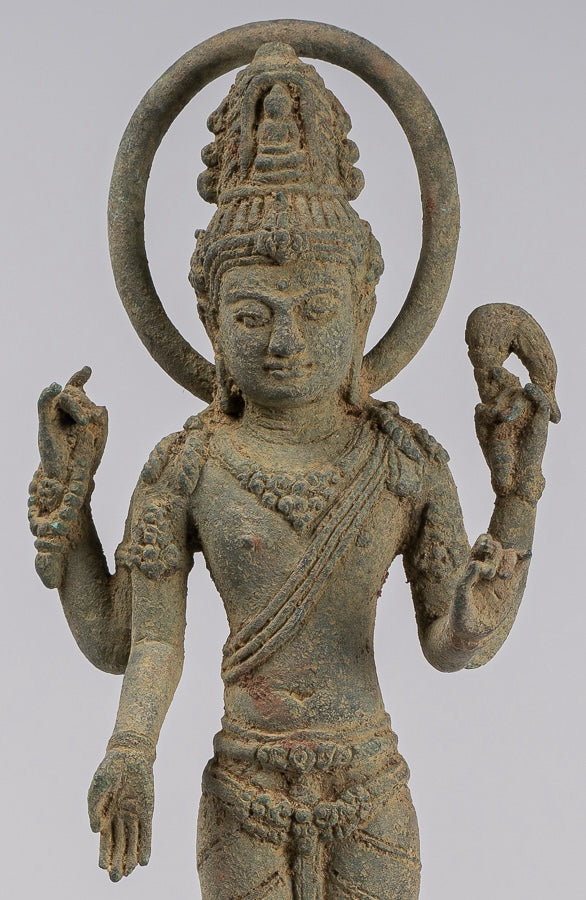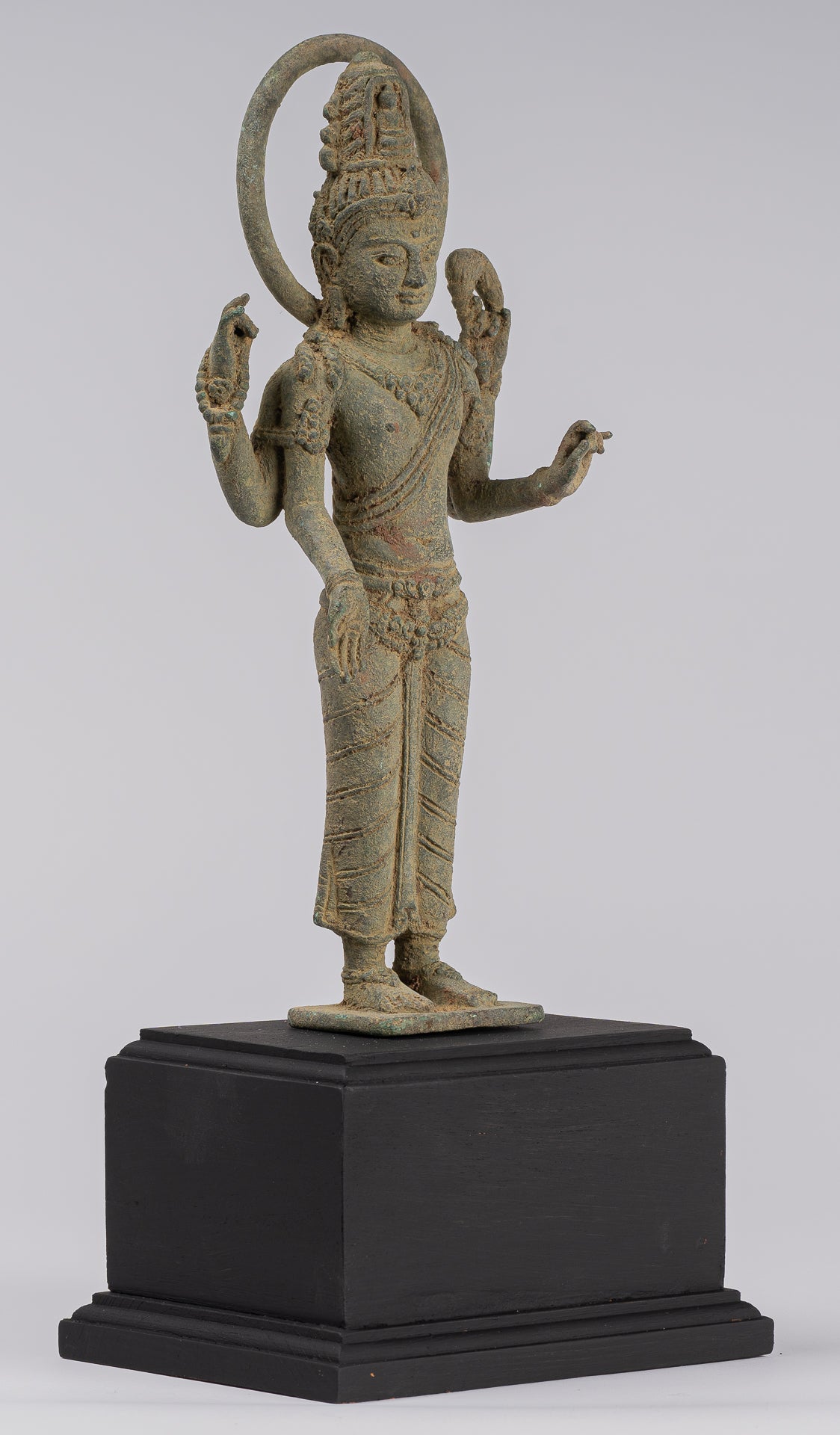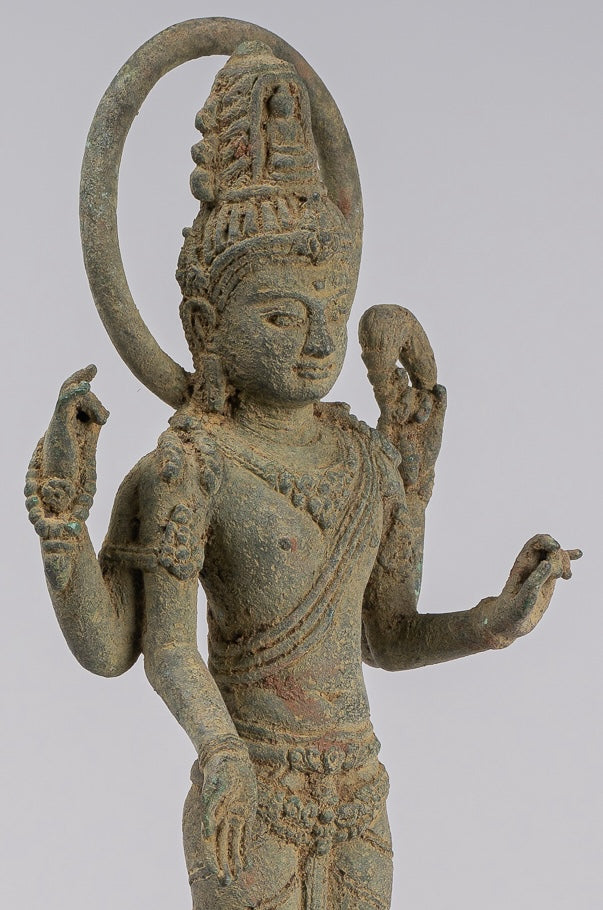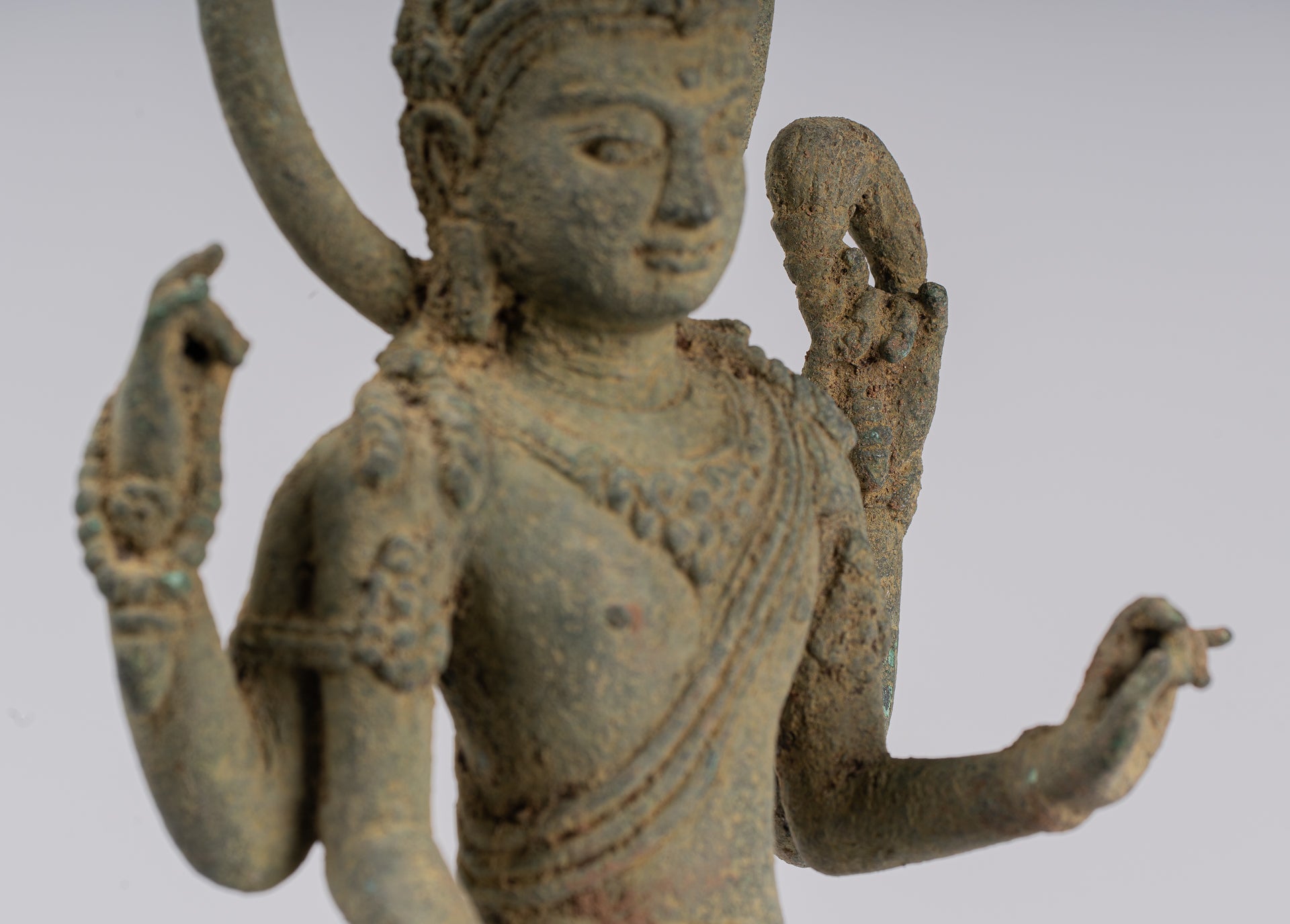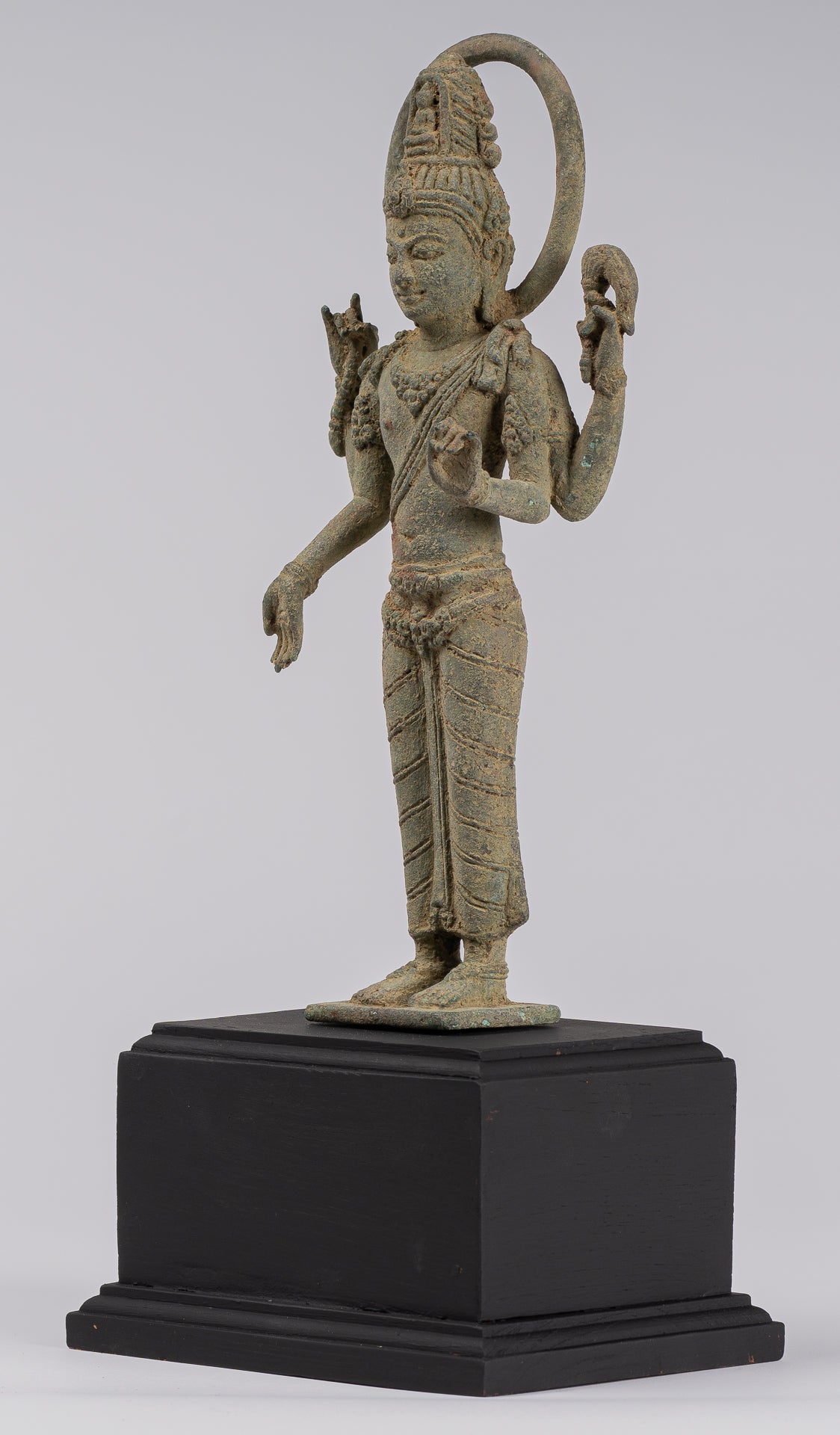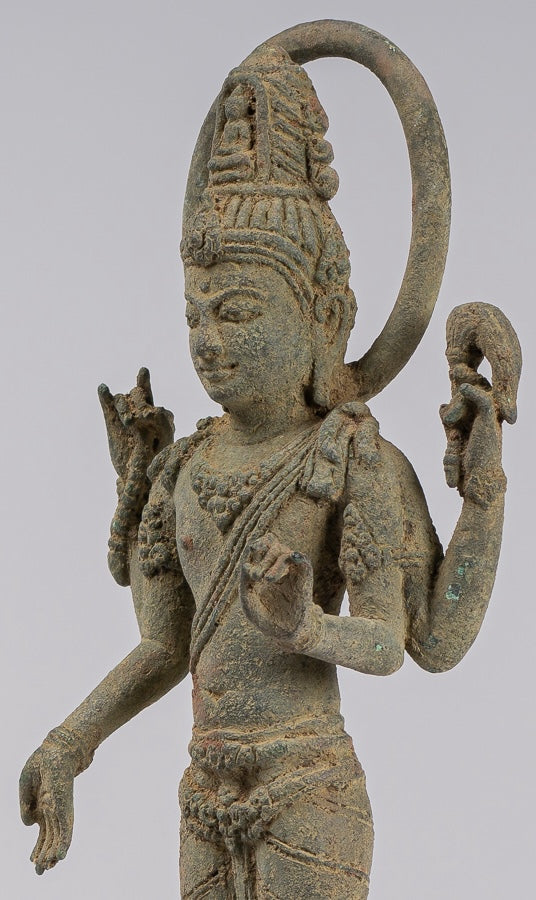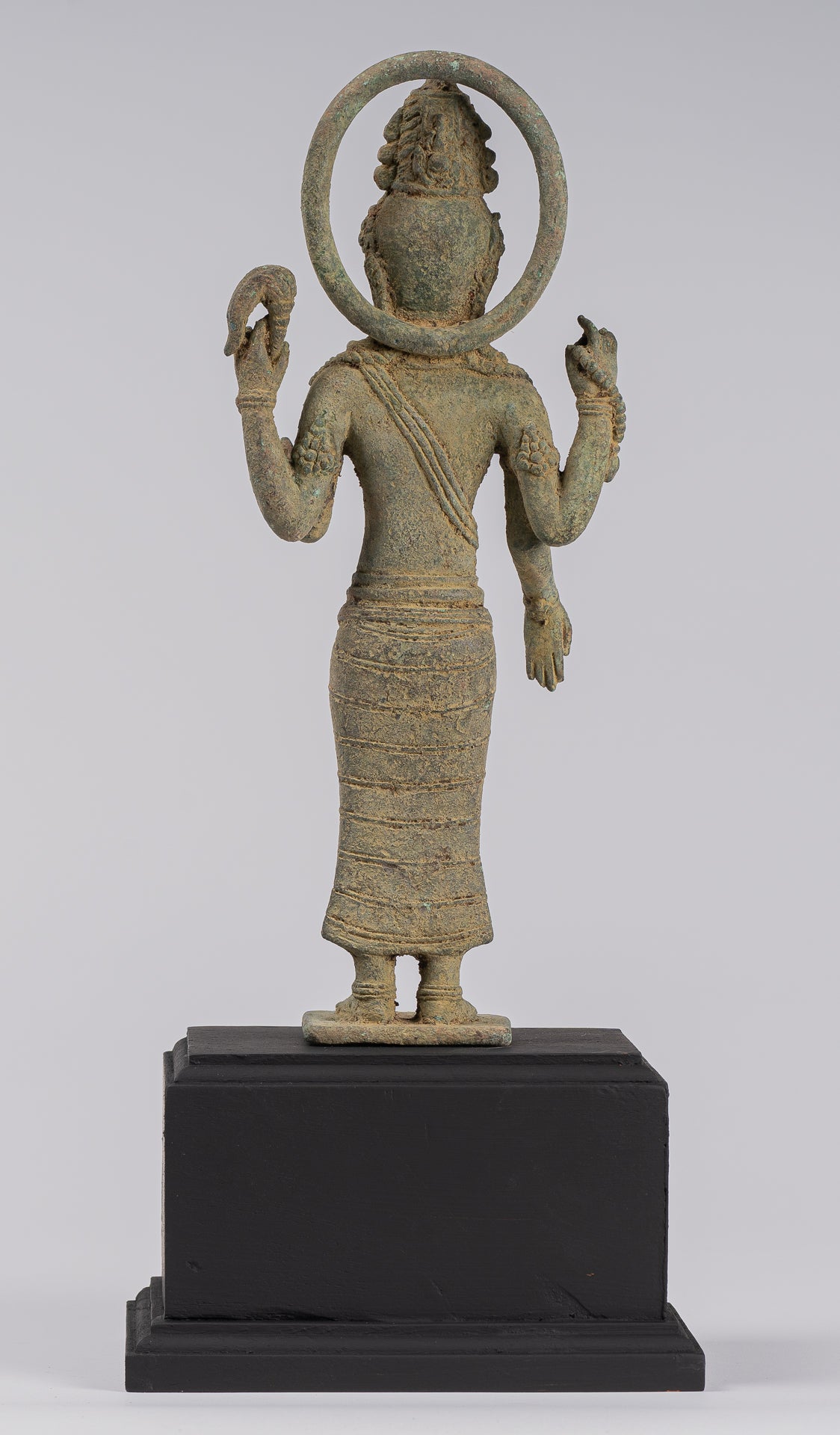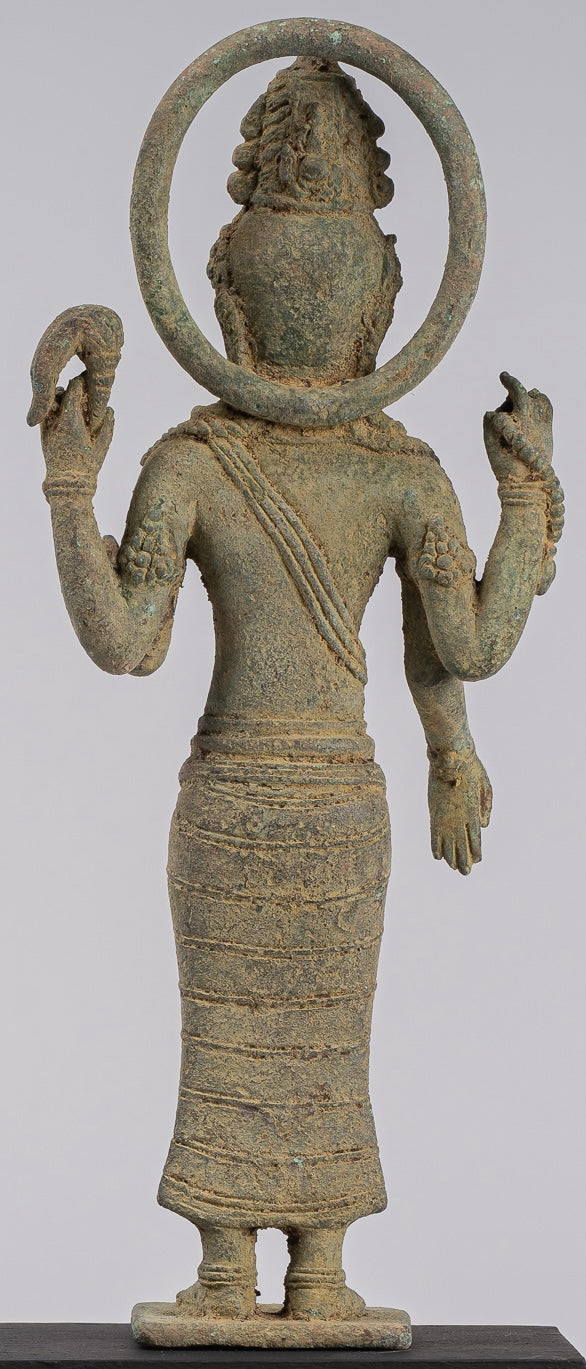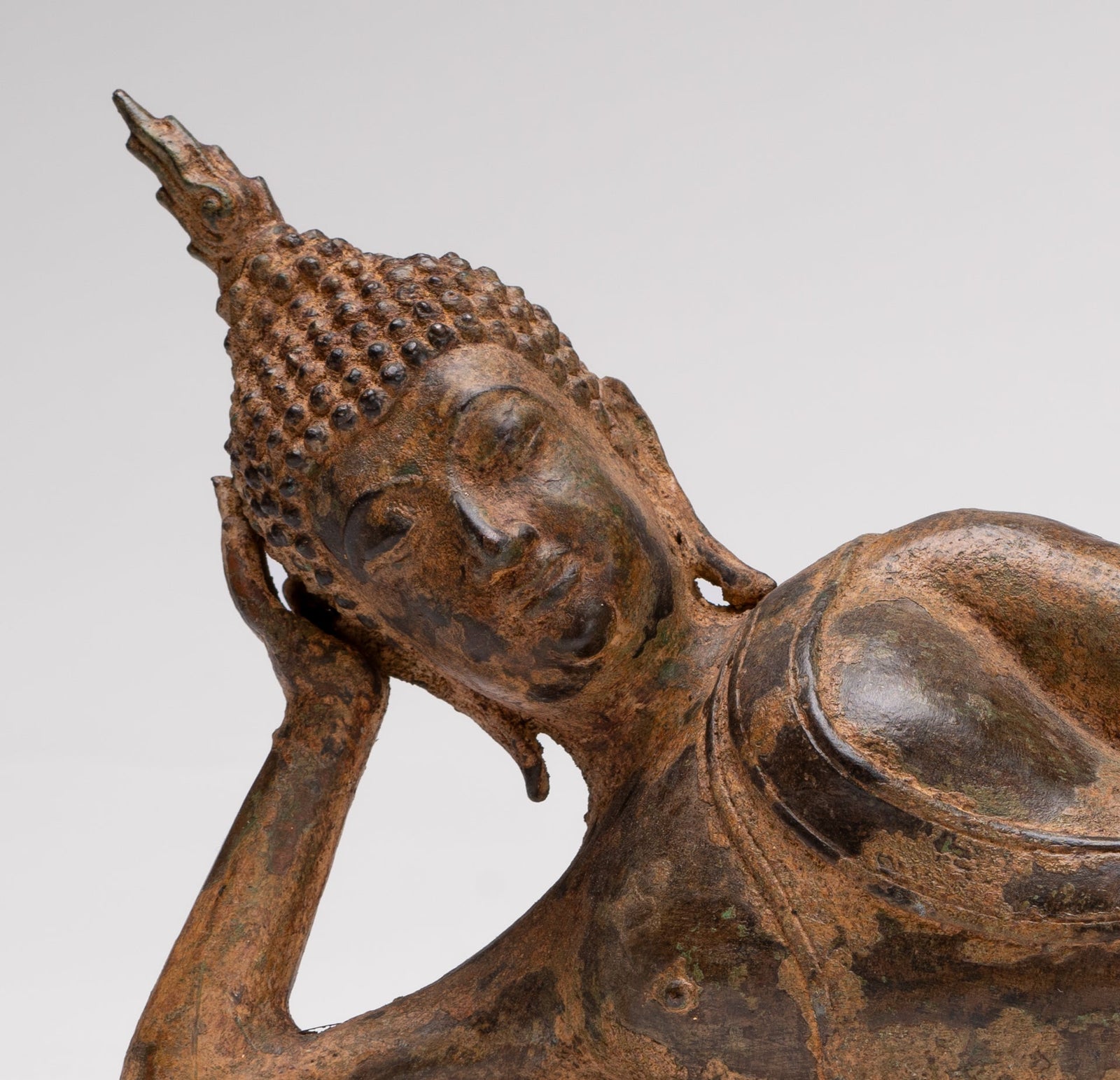-
Lokeshvara - Antique Indonesian Style Majapahit Standing Bronze Lokeshvara Statue - 39cm/16"
Measurements Height 39cm/16"
An antique Java style standing bronze Lokeshvara sculpture in the 13th century Majapahit style.
Lokeshvara, also known as Avalokiteshvara or Guanyin, is one of the most revered and beloved figures in Buddhist iconography. As a Bodhisattva, Lokeshvara embodies the essence of compassion, representing the aspiration to alleviate suffering and attain enlightenment not only for oneself but also for all sentient beings.
Lokeshvara serves as a profound embodiment of the Bodhisattva ideal, which prioritizes compassion and altruism over personal liberation. His primary role is to hear and respond to the cries of suffering beings, using his wisdom and skillful means to alleviate their afflictions.
Lokeshvara is stood samabhanga on a simple pedestal that is loose mounted on a wood base.
His face has a downcast gaze. Upon his head he wears a decorative Javanese style tiara in front of his Kirita-Makuta or tall conical crown. This symbolises control over Positive and Negative attitudes. He has an aquiline nose and elongated earlobes with large ear rings.
A top Lokeshvara's head can be seen a seated meditating Amitabha Buddha.
In two of his four hands he holds a fly whisk and mala beads.
His third hand is held in a gesture of teaching. The thumb and finger making a circle.
His lowered right hand makes the boon bestowing gesture (varada mudra). He holds his hands in the wish-fulfilling mudra: his right hand facing down and the palm outward.
Behind a simple ring or aureole signifies his divinity.
Lokeshvara stands as a powerful symbol of compassion in Buddhism and beyond. As a Bodhisattva, he exemplifies the enduring aspiration to alleviate suffering and promote the well-being of all sentient beings.
Lokeshvara's evolution over time and his cultural adaptability underscore the timeless relevance of his message, serving as an enduring source of inspiration for individuals seeking to cultivate compassion and make the world a more compassionate place.
The sculpture has a wonderful azurite and malachite patina.
SATISFACTION GUARANTEE - We have been offering SE Asian Art for many years and are proud of the reputation we have developed for fair and honest listings. However, if for any reason, whatsoever, you are unhappy with your purchase please just let us know and we will provide a full refund. We want you to be 100% happy with your purchase.
-
The majority of orders will be shipped with DHL. This is a secure, express and fully tracked service.
Items less than 2Kg we typically ship using Royal Mail.
Once we receive your order we try to ship all orders the same or next working day.
Large and/or fragile pieces requiring palletising, specialist crating and/or extra packaging may take a little longer. Palletised shipments will be delivered curbside.
All orders over 35 GBP will be shipped free of charge.

-
We genuinely hope that all purchases delight.
However, if they do not, regardless of reason, we will refund all orders upon receipt of the unwanted item. Just notify us within 14 days of receiving your order that you wish to make a return and send the piece back to us with 30 days of delivery.
Let Us Help You Find The Piece You Desire
What Our Customers Think
Yes, the Buddha arrived safely today! I think he is a stunning display piece and i should find a special spot for him on his own !
Gavin, Stirling, UK
I just received the Buddha, the piece is even more beautiful than on the pictures. Many thanks again, is exactly what I was looking for, I am so happy with it!
Kasia, London, UK
l have received the parcel. That's really an excellent and lovely carved Buddha. Thank you very much.
Hugo, Zurich, Switzerland


